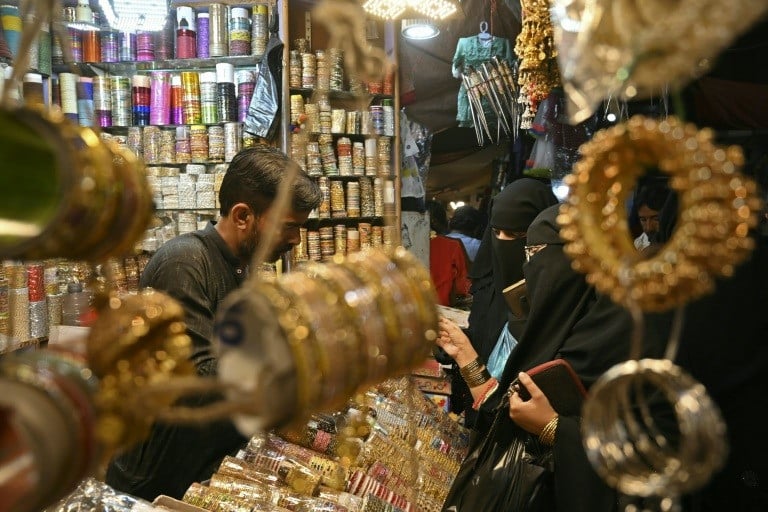A must-have piece of jewelry for ladies, layers of elaborately adorned bangles are a thoughtful addition to their Eidul Fitr ensembles.
A single bangle can be made by more than a dozen individuals, from hot factories to the homes of designers who expertly hand-decorate them.
“We feel incomplete wearing any outfit or attending any event without bangles, regardless of the current fashion trends,” said Talat Zahid, 42, who adorns bangles with beadwork, embroidery, and sewing.
“Even if you don’t wear jewellery but wear bangles or a bracelet with your outfit, the outfit looks complete.”
Market booths are decked with a sparkling variety of colourful bangles, each turned over and examined for their beauty and faults by ladies who haggle for a reasonable deal, in the run-up to this week’s Eidul Fitr festivities, which celebrate the end of Ramadan.
They are usually offered for sale by the dozen, with prices ranging from about Rs. 150 to Rs. 1,000 when silk and stones are added.
The tiny “churi” glass bangle is made in Hyderabad, where a single furnace can create up to 100 bangles in an hour by shaping molten glass wire around an iron rod.
The labor is hard and stressful; workers must endure stifling heat in uncontrolled factories that frequently experience power outages, and the delicate glass threads are brittle.
“It is done without the use of a fan. The fire goes out when we switch on the fan. Thus, there is a lot of heat. Our job slows down as the weather becomes hotter “Sameer, 24, who followed his father into the sector and makes less than the Rs32,000 minimum pay per month, said.
Following the 1947 division of British-ruled India, Muslim migrants who had made bangles in the Indian city of Firozabad moved their business to Hyderabad, where the sector employs hundreds of thousands of people.
However, many firms have been forced to stop or run at a reduced capacity due to skyrocketing gas prices after government subsidy cuts.
Muhammad Nafees, a 50-year-old business owner, stated, “The speed at which the government has increased the gas prices and taxes, (means) the work in this area has started to shrink instead of expand.”
The majority of bangles are transported from the factory as simple loops, where they are adorned to varying degrees by women who labor from home, and then they are sent to traders to be sold in marketplaces.
The show is frequently a family event.
When her three kids go home from school, Saima Bibi, 25, works from home, painstakingly placing stones to bangles while her husband is at the furnaces.
“They go through a lot of hands to be prepared,” she stated.
I am a dedicated student currently in my seventh semester, pursuing a degree in International Relations. Alongside my academic pursuits, I am actively engaged in the professional field as a content writer at the Rangeinn website.







